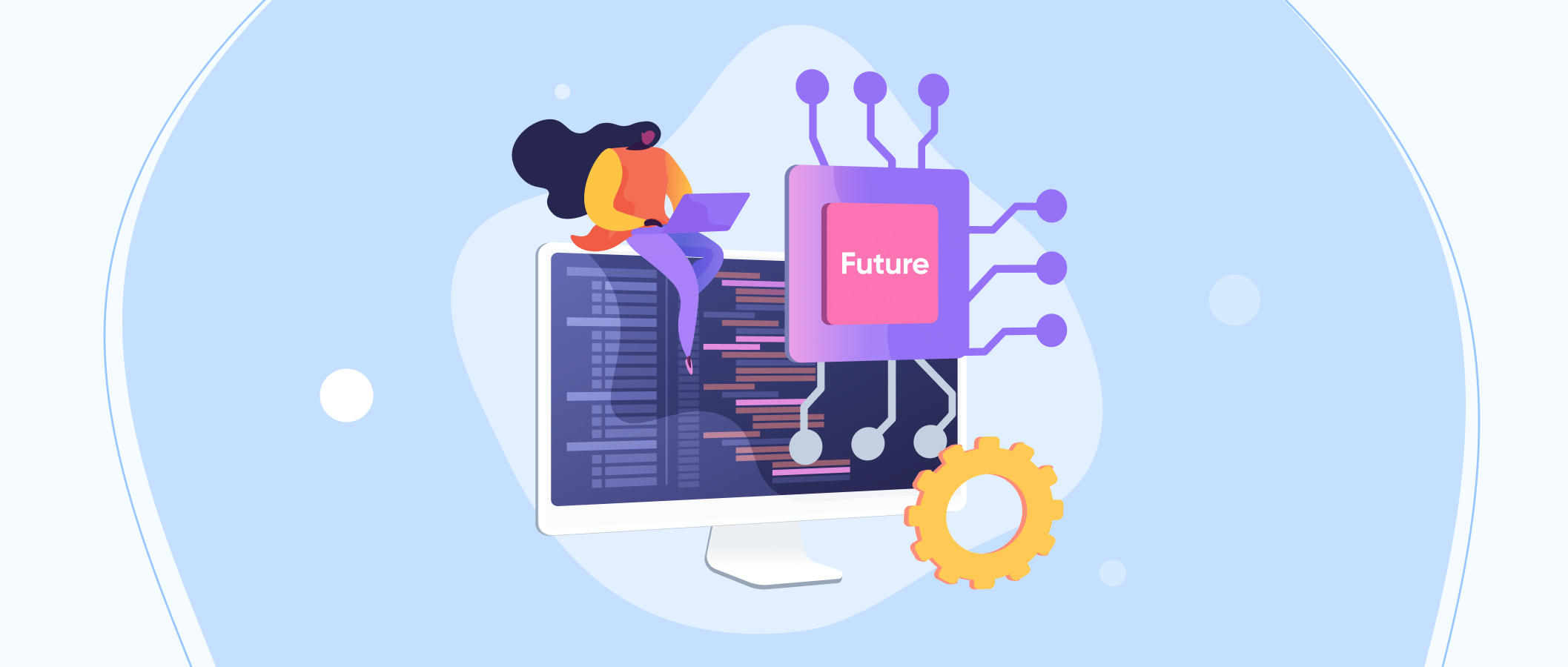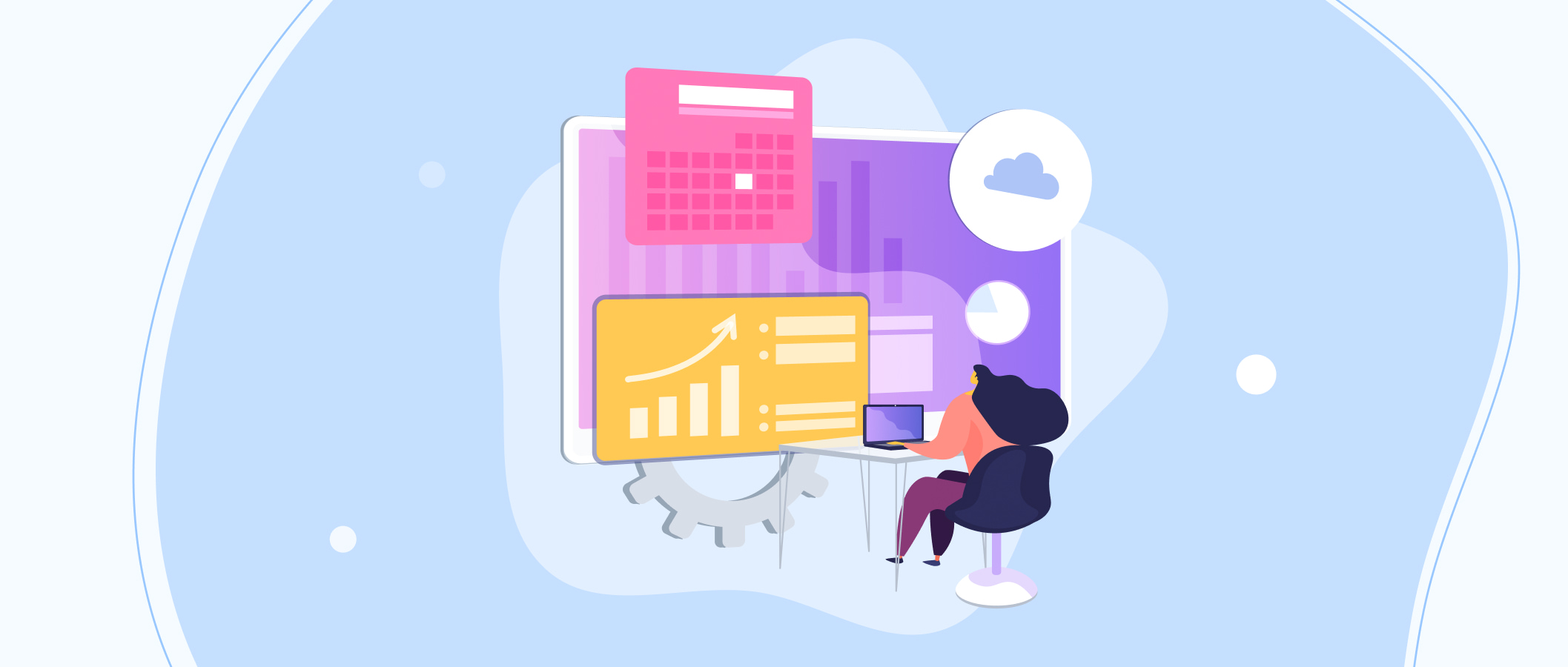We've updated this article with 2022 trends to keep it up to date!
According to Gartner , 70% of the cloud computing industry was planning to increase spending due to technology transitions by November 2020 and predicts that 90% of enterprises will have multi-cloud solutions by 2025. The share of cloud spending in the global corporate IT market will grow from 9.1% in 2020 to 14.2% in 2024. As the cloud becomes an integral part of IT enterprise, we see the long-promised benefits of digital transformation. Let's look at real numbers and analyze how important cloud computing is in the world today:
-
The cloud technology market is constantly growing, by 2026 it will amount to 947.3 billion USD
-
94% of all business workloads are now processed in the cloud (75% - SaaS)
-
Google Drive is the largest cloud storage service with over 2 billion users worldwide
-
AWS dominates the market, some experts call a figure of 60% at the time of 2022.
In some cases, it seems that even the most optimistic predictions of cloud technology are coming true. The cloud doesn't just make business processes cheaper or more efficient, it changes the way we work, live, and interact. Let's look at what cloud computing trends await us in 2021 and 2022.
Cloud Adaptation Competition

Just take a look at all those cloud-based companies on the market that compete with each other. The cloud's impact highlighted the role of the technology stack as a primary differentiator during a pandemic.
Technology and leaders’ decisions compete with each other all around the world on the future of cloud computing. However, cloud backbone, cloud services, and cloud-based artificial intelligence largely determine the success of any business.
Manufacturers use predictive analytics and cloud technologies to get even closer to creating highly personalized offerings based on customer requests. The pandemic has forced even the most complex supply chains to cope with changing regulatory requirements, consumer needs, and other uncontrollable factors such as daily differences. Industry leaders are those who can quickly and effectively rebuild their brands, always staying close to consumers.
True cloud transformation must start with a plan to move workloads and business processes to the cloud. There is always more than a simple migration of several enterprise applications. The Cloud First strategy requires companies to completely redesign their business for the cloud and rethink how their products or services work, how their people work, and how the customer experience evolves.
Digital Twin
Cloud-based technologies let companies build new solutions based on old ideas. For example, digital twins technology that's been around for decades. Thanks to the cloud computing trend, today it is getting a new incarnation.
The cloud allows models of digital twins (physical objects and processes copies) to scale in real-time and enrich functionality with artificial intelligence. It becomes possible to network digital twins, linking multiple twins together to create detailed living models of entire factories, product life cycles, supply chains, transport hubs, or entire cities. Continuous streams of data from which the twin is formed will soon become essential to the operation of absolutely every enterprise.
Data and AI can act as the primary business organizational tools, increasing agility in real-time, allowing business process restructuring, and shaping entirely new ecosystems.
Technology Democratization

Clouds not only improve IT infrastructure but also help to level up the employees. This was highlighted during the pandemic when cloud-based remote collaboration tools played a critical role in improving business productivity. Everyone noticed the influence on employers' work and how it grew.
The new cloud technologies are becoming democratic. Cloud technologies let people tackle a multitude of technology challenges without constantly turning to IT for support.
This means that the IT department can focus on more important tasks, and people can freely use technology to increase productivity, security, and stimulate innovation. For example, G&J Pepsi gave a group of people with little to no software development skills access to Microsoft's cloud-based Power Apps tool, which simplifies application development. The group created eight applications without the help of coders and saved $500,000 in the first year alone.
Bring Your Own Environment
The pandemic has changed the way we work forever. And most companies prefer to stick to these new post-pandemic working habits. The most popular working type is a hybrid model where people check in the office several times per week and work from home the rest of the time.
Whereas Bring Your Own Device (BYOD) was the trend in the past, we are now moving to Bring Your Own Environment (BYOE). Leaders can rethink the purpose of each employee's work in each section of the corporate hierarchy by determining who and when it makes sense to be in certain locations and interact with certain colleagues.
In any case, a modern work environment for effective interaction with colleagues and partners is not possible without the cloud and the corresponding assistive technologies, such as public cloud infrastructure services.
Cloud Computing Technologies
The future of cloud computing isn't just about connecting people. Blockchain, distributed databases, and cloud tokenization are enabling the next generation of ecosystems that share data between people and organizations to improve cost-effectiveness and build new business models.
During the pandemic, technologies that were previously considered too complex or too niche suddenly came to simplified payments. Businesses are looking to build on these cloud computing trends.
Cloud computing and artificial intelligence (AI) go hand in hand, and this will only become more evident in 2022. Machine learning platforms need processing power and data bandwidth, and through the cloud, this is becoming a more affordable and convenient option. The AI we already take for granted every day, such as Google's search algorithms, is almost entirely cloud-based, and new AI trends such as language modeling and creative algorithms will also rely on cloud computing. However, cloud computing is not limited to tech giants. Cloud services allow even those with limited budgets and weak skills to access advanced machine learning features. AI adoption in 2022 is only expected to grow in companies of all sizes and types thanks to cloud solutions.
Cloud Computing in the Future

Recently, Cloud computing development has accelerated significantly; many of the advanced solutions are already available in the world.
Top world companies most likely use cloud computing to have all-around access to the working materials. It gives more flexibility to their workers, especially during the COVID-19 pandemic when people have started to work at home and still needed many materials from their jobs. We’ve created many products for companies with such issues and medical and finance offices seem to have the most need for this approach.
However, some large corporations are still on the conservative side and for now, they don’t follow the trends in cloud computing. We can understand them, but sooner or later they will need to bring cloud computing topics to the light and follow the rest of the companies' examples. Nobody wants to be a pioneer and get big, but everyone understands that it is unacceptable to lag.
10 Examples of Cloud Computing
Cloud computing technology is a growing market. There are various examples of cloud-based computing as it is present almost everywhere, including video streaming and messaging applications. Here are some of the cloud computing today examples:
-
Linkedin
-
DropBox
-
IBM
-
Slack
-
Google Cloud
-
Microsoft 365
-
Adobe Creative Cloud
-
AWS
-
Salesforce
-
Zoom
These are all examples of large companies that use cloud applications. Please, consult with Owlab.group specialists before making your final decision on your business. It is always better to ask a specialist all the questions that appear in your mind before making the next step. That’s why we are always open to answer your weirdest questions.
FAQ

What is cloud development?
Cloud development includes developing cloud architecture, such as planning, organizing, designing, and structuring cloud delivery models. Also, a specialist must manage cloud service models. This includes connecting external vendor data centers to the company's network, creating a cloud service failure recovery plan, network bandwidth, and more. In addition, cloud software development consists of the design and development of cloud applications, services, and products. The Cloud computing technologies list can include everything from backend, frontend, web application, full-stack, data and application integration, and cloud application distribution.
What is cloud infrastructure?
Cloud infrastructure or IaaS (Infrastructure as a Service) is an available cluster that consists of servers, storage systems (DSS), network hardware and software that manages the cloud. The cluster contains virtual servers of different configurations and capacities. Virtual machines can be either completely isolated from each other (servers of different clients), or combined into a single pool of resources, have common networks and accesses (infrastructure of a separate client).
What is most important for cloud computing?
Most importantly, cloud computing gives you the advantage of rapid deployment. Once you choose this operation method, your entire system will start performing these functions within a few minutes. Of course, the amount of time spent will depend on which technology is right for you for your business.
What is the future of computing?
The cloud technologies global market will grow by 17.5% annually. By 2025 it will reach $ 832.1 billion. Companies don't just run clouds but increasingly trust public cloud services. By 2023, the global public cloud market will reach $ 500 billion.
Final Thoughts
Cloud-based technology is an opportunity to always have secure access to all your personal information. And you leave behind all extra electronic mediums as flash drives, disks, etc to carry and share information around. There is no doubt that cloud technologies are one of the most popular and interesting topics in the IT field, and more and more interesting solutions appearing in the world are associated with them. So is cloud computing the future?
Over the past few years, it has become clear that cloud solutions are changing the way we work, but their transformative effect is far from over. In 2022, we will see both the strengthening of last year's developments and the introduction of new trends and technologies that will continue to change the way we think about IT services and infrastructure.
Thus, without a doubt, the cloud computing future seems to be very bright, because such giants as Microsoft, Apple, and Google use the cloud and follow cloud computing future trends to cover more and more users all around the world. The most prominent products are Xbox Live, Windows Live, OnLive, Google Docs and we are sure you use them regularly.
Check our Case Studies to learn more about our projects and see how we can help you!